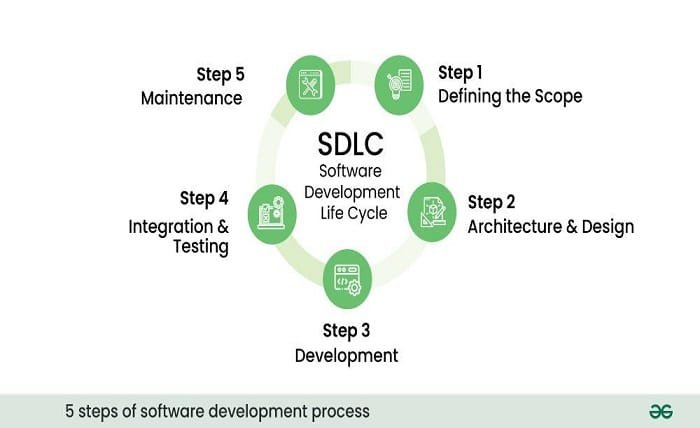The Development Process: A Comprehensive Guide

Introduction
The development process is a structured approach to creating and delivering products, services, or systems. Whether it’s software, hardware, or a business strategy, understanding the development process is crucial for ensuring that projects are completed on time, within budget, and to the desired quality. This comprehensive guide will walk you through every stage of the development process, providing insights into best practices and strategies to optimize each step.
What is the Development Process?
The development process refers to the series of steps or stages that a project goes through from initial concept to final delivery. These steps are designed to ensure that the project meets its goals, addresses user needs, and is executed efficiently. The development process typically involves phases such as planning, design, implementation, testing, and maintenance. Each phase of the development process plays a critical role in the overall success of the project.
Key Phases of the Development Process
Understanding the key phases of the development process is essential for managing and executing projects effectively. The development process usually includes the following phases:
- Planning: This initial phase of the development process involves defining the project’s goals, scope, and requirements. Proper planning is vital to avoid potential pitfalls later in the development process.
- Design: In this phase of the development process, the project’s architecture and system components are designed. The design phase ensures that the project’s blueprint is clear and feasible before moving to the next stage of the development process.
- Implementation: The implementation phase is where the actual development work takes place. This stage of the development process involves coding, building, and assembling the project components according to the design specifications.
- Testing: Testing is a crucial phase in the development process where the product is evaluated to identify and fix any issues. This phase ensures that the project meets the required standards before it is launched.
- Deployment and Maintenance: The final phase of the development process involves deploying the product to the end-users and providing ongoing maintenance. Continuous improvement and updates are key aspects of this phase in the development process.
The Importance of a Well-Defined Development Process
A well-defined development process is essential for the success of any project. It provides a clear roadmap for the project team, ensuring that everyone understands their roles and responsibilities. A structured development process helps in identifying potential risks early, allowing for proactive management. Moreover, a well-executed development process ensures that the project meets its goals, stays within budget, and is delivered on time.
Common Challenges in the Development Process
Despite careful planning, the development process often encounters challenges that can impact the project’s success. Some common challenges in the development process include scope creep, where the project’s requirements expand beyond the original plan; communication breakdowns within the team; and technical issues that arise during implementation. Addressing these challenges early in the development process is critical to keeping the project on track.
Best Practices for Optimizing the Development Process
Optimizing the development process involves implementing best practices that enhance efficiency and effectiveness. Some key best practices in the development process include:
- Clear Communication: Ensuring that all stakeholders are on the same page throughout the development process is crucial for avoiding misunderstandings and delays.
- Iterative Development: Adopting an iterative approach to the development process allows for continuous feedback and improvement, leading to a better final product.
- Risk Management: Identifying and mitigating risks early in the development process can prevent potential problems from escalating.
- Automation: Utilizing automation tools in the development process can streamline repetitive tasks and improve overall efficiency.
The Role of Agile Methodology in the Development Process
Agile methodology has become increasingly popular in the development process due to its flexibility and focus on collaboration. Agile breaks down the development process into smaller, manageable sprints, allowing teams to adapt to changes quickly and deliver results incrementally. This approach to the development process fosters continuous improvement and helps in delivering high-quality products faster.
How to Manage the Development Process Effectively
Effective management of the development process requires strong leadership, clear communication, and the ability to adapt to changes. Project managers play a crucial role in overseeing the development process, ensuring that the team stays focused on the project goals and timeline. Tools such as project management software can aid in tracking progress, managing resources, and facilitating communication throughout the development process.
Case Studies: Successful Development Processes
Looking at real-world examples can provide valuable insights into how the development process can be successfully executed. Case studies of companies that have effectively managed their development process often highlight the importance of clear goals, strong teamwork, and the ability to adapt to unforeseen challenges. These examples serve as a reminder that a well-structured development process is key to achieving project success.
Future Trends in the Development Process
The development process is constantly evolving, with new tools and methodologies emerging to address the changing needs of projects. Future trends in the development process include the increased use of artificial intelligence and machine learning to automate tasks, the adoption of DevOps practices to enhance collaboration between development and operations teams, and the growing importance of sustainability in the development process. Staying abreast of these trends is essential for staying competitive in the field.
Conclusion
The development process is a critical component of successful project execution. From initial planning to final deployment, every phase of the development process plays a vital role in achieving the desired outcome. By understanding the key phases, addressing challenges, and implementing best practices, organizations can optimize their development process to deliver high-quality products and services. As the landscape continues to evolve, staying informed about new trends and methodologies will be crucial for future success in the development process.
FAQs
1. What is the development process?
The development process is a series of structured steps that guide the creation and delivery of products, services, or systems.
2. Why is the development process important?
A well-defined development process ensures that projects are completed on time, within budget, and meet the desired quality standards.
3. What are the key phases of the development process?
The key phases of the development process include planning, design, implementation, testing, and maintenance.
4. How can the development process be optimized?
Optimizing the development process involves clear communication, iterative development, risk management, and the use of automation tools.
5. What are future trends in the development process?
Future trends in the development process include the use of AI, DevOps practices, and a focus on sustainability.





